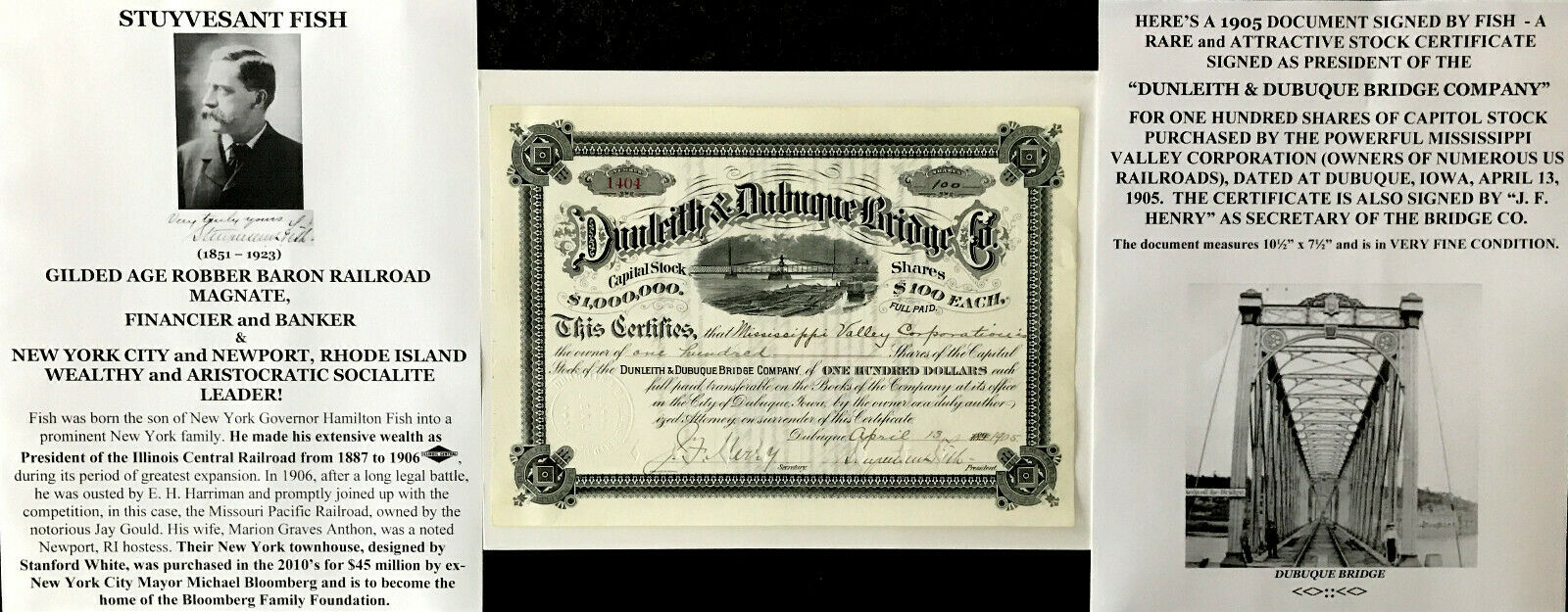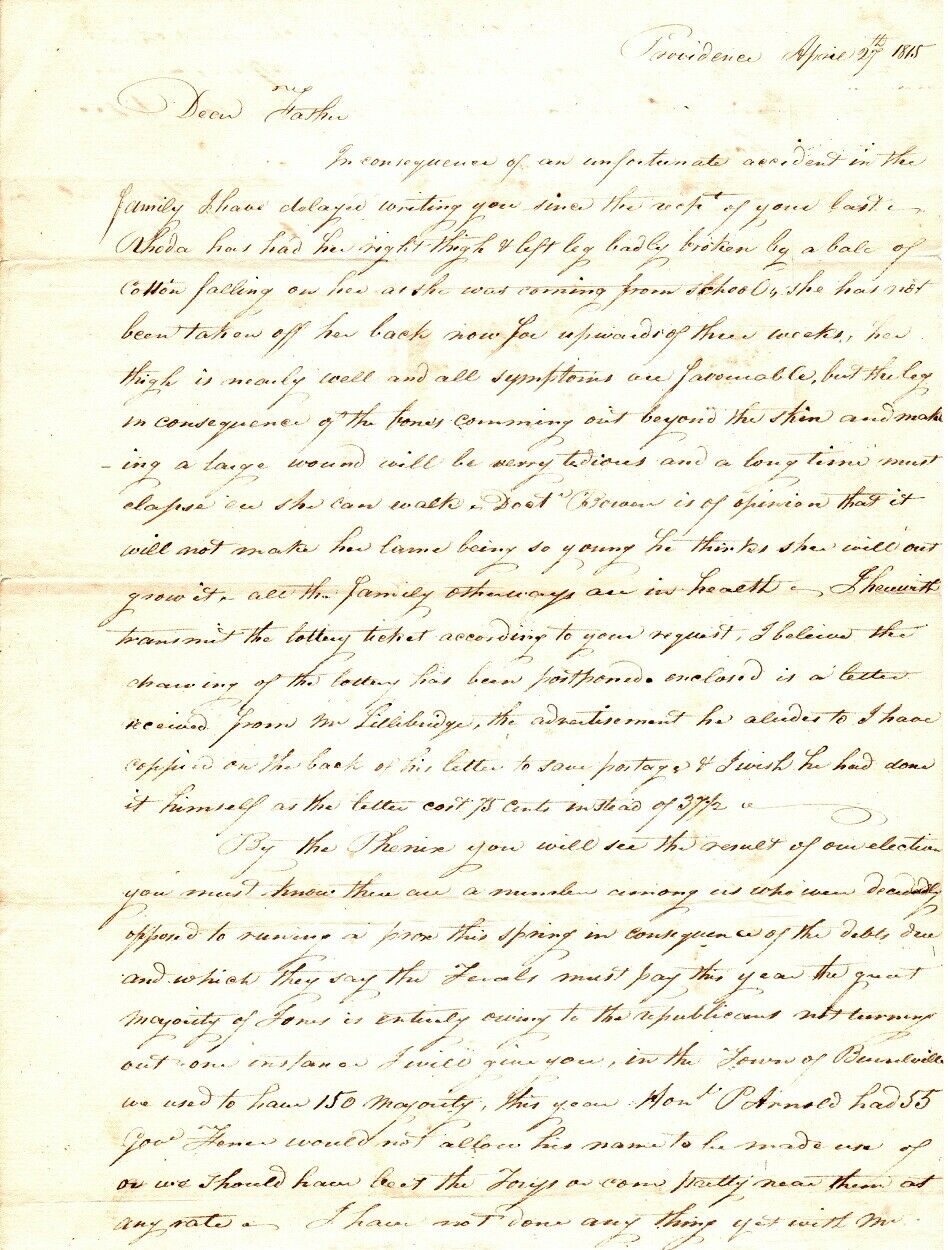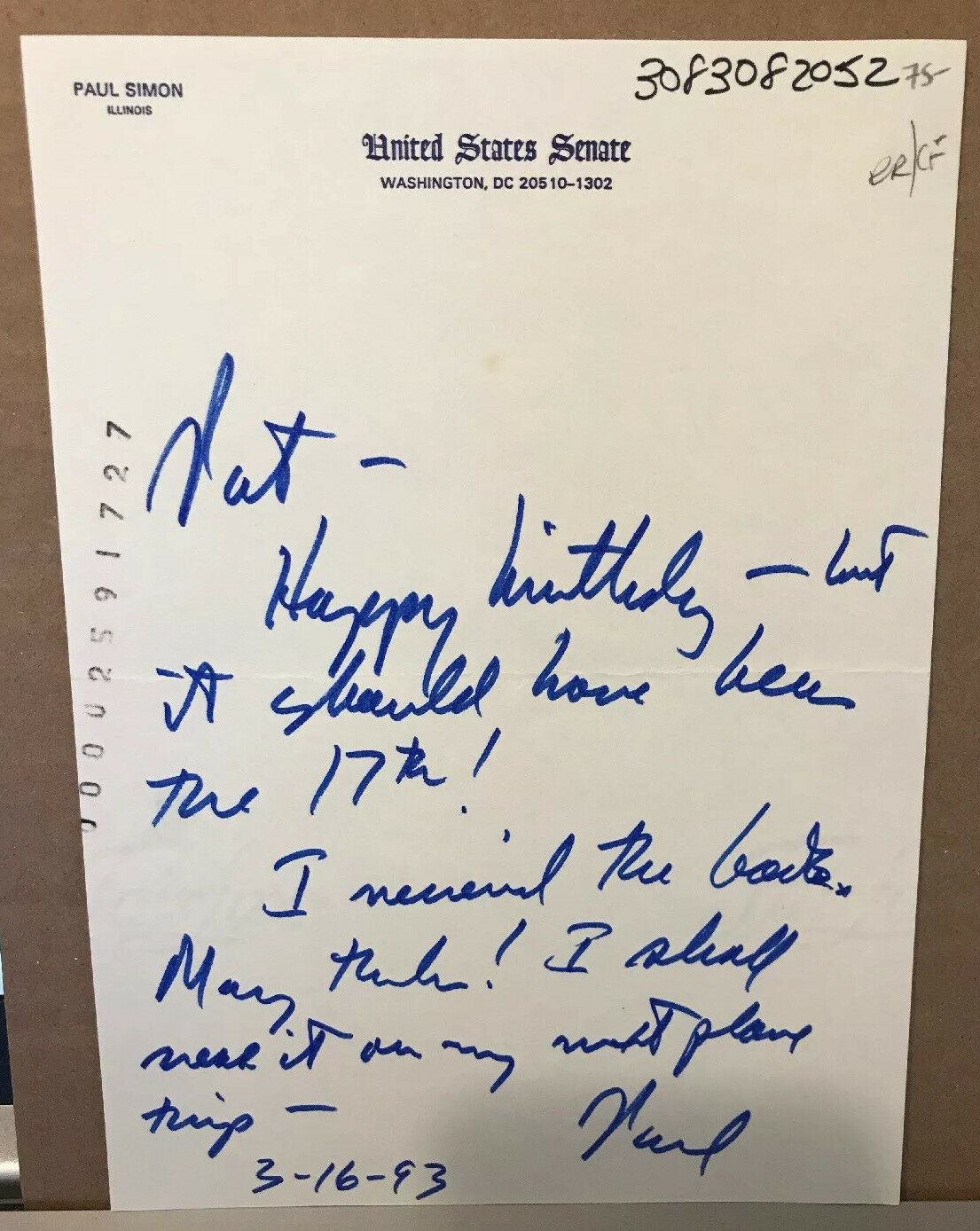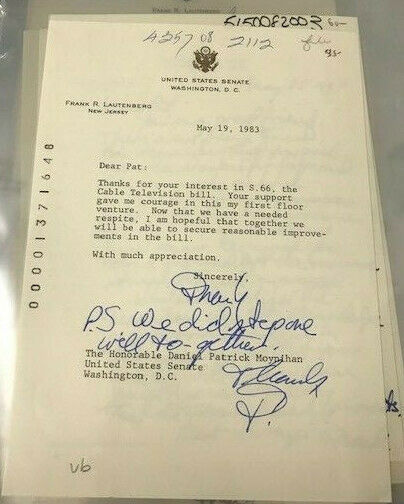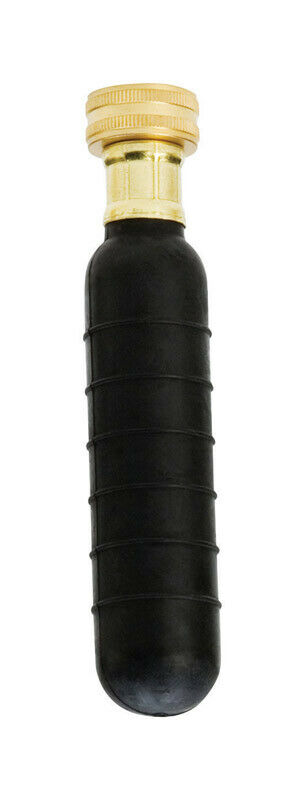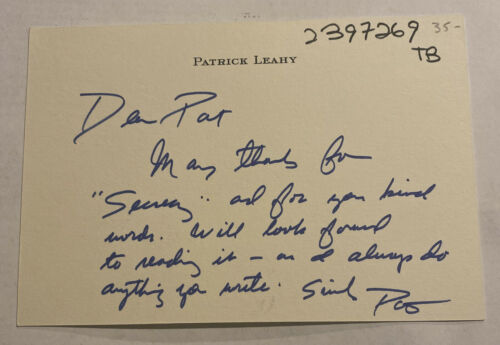-40%
IL CENTRAL RAILROAD MAGNATE NY FINANCIER DUBUQUE IA BRIDGE STOCK DOCUMENT SIGNED
$ 5.27
- Description
- Size Guide
Description
STUYVESANT FISH(1851 – 1923)
GILDED AGE ROBBER BARON RAILROAD MAGNATE,
FINANCIER and BANKER
&
NEW YORK CITY and NEWPORT, RHODE ISLAND WEALTHY and ARISTOCRATIC SOCIALITE LEADER!
Fish was born the son of New York Governor Hamilton Fish into a prominent New York family.
He made his extensive wealth as President of the Illinois Central Railroad from 1887 to 1906
, during its period of greatest expansion. In 1906, after a long legal battle, he was ousted by E. H. Harriman and promptly joined up with the competition, in this case, the Missouri Pacific Railroad, owned by the notorious Jay Gould. His wife, Marion Graves Anthon, was a noted Newport, RI hostess.
Their New York townhouse, designed by Stanford White, was purchased in the 2010’s for million by ex-New York City Mayor Michael Bloomberg and is to become the home of the Bloomberg Family Foundation.
HERE’S A
1905
DOCUMENT SIGNED BY FISH
- A RARE and ATTRACTIVE STOCK CERTIFICATE SIGNED AS PRESIDENT OF THE
“DUNLEITH & DUBUQUE BRIDGE COMPANY”
FOR ONE HUNDRED SHARES OF CAPITOL STOCK PURCHASED BY THE POWERFUL MISSISSIPPI VALLEY CORPORATION (OWNERS OF NUMEROUS US RAILROADS), DATED AT DUBUQUE, IOWA, APRIL 13, 1905.
THE CERTIFICATE IS ALSO SIGNED BY “J. F. HENRY” AS SECRETARY OF THE BRIDGE CO.
The document measures 10½” x 7½” and is in VERY FINE CONDITION.
<<>::<<>
Biography of Stuyvesant Fish
Stuyvesant Fish
(June 24, 1851 – April 10, 1923) was a noteworthy grandee of the United States'
Gilded Age
, having made his money as President of the
Illinois Central Railroad
. He kept grand residences in
New York City
and
Newport, Rhode Island
, entertained lavishly, and, along with his wife "Mamie," served as leaders of society.
Early life
Stuyvesant Fish was born on June 24, 1851 in
New York City
. He was the son of
Hamilton Fish
(1808–1893), the
16th Governor of New York
, a
United States Senator
and
United States Secretary of State
who is recognized as the "pillar" of the
Grant Administration
and considered one of the best U.S. Secretaries of State by scholars, and his wife Julia Ursin Niemcewicz Kean (1816–1887), a descendant New Jersey governor,
William Livingston
. His parent’s marriage has been described as a happy one and his mother was known for her "sagacity and judgment." His father was named after his grandfather's friend,
Alexander Hamilton
. Fish had two brothers,
Nicholas Fish II
(1846–1902) and
Hamilton Fish II
(1849–1936), and five sisters, Sarah Morris Fish (1838–1925), Julia Kean Fish (1841–1908), Susan LeRoy Fish (1844–1909), and Edith Livingston Fish (1856–1887).
His paternal grandparents were
Nicholas Fish
(1758–1833) and Elizabeth Stuyvesant (a great-great-granddaughter of
Peter Stuyvesant
). Nicholas Fish was a leading
Federalist
politician and notable figure of the
American Revolutionary War
who was active in the
Yorktown Campaign
that resulted in the surrender of Lord Cornwallis.
Peter Stuyvesant
was a prominent founder of New York, then a Dutch Colony, and his family owned much property in Manhattan.
He graduated from
Columbia College
in
Manhattan
.
Career
Fish was an executive of the Illinois Central Railroad, and served as its president from 1887 to 1906, overseeing its period of greatest expansion.
In 1906, he was removed from his position by
E. H. Harriman
, possibly because of Fish's cooperation and participation with the state government in investigating the
Mutual Life Insurance Company
. Fish also served on the board of directors of the
National Park Bank
. However, it is also possible that the reason was that his wife, Mamie, had snubbed Harriman's wife, Mary, from a society tea party. Mamie found Mary too "dull" and so snubbed her from a tea party at their home in
Newport, Rhode Island
, where they spent the summer season.
His wife, Marion, known as "Mamie", was a leader in New York and
Newport
society. When in Newport she lived in a grand
Colonial Revival
house named "Crossways", where her Harvest Festival Ball in August signaled the end of the Newport social season.
When
Grand Duke Boris
of Russia visited Newport, Mrs. Fish issued invitations for a dinner and ball in his honor; the night of the ball the Duke was detained by Mrs.
Ogden Goelet
, Mrs. Fish's rival as social leader, at whose home he was staying. About 200 guests had assembled in the hall at Crossways, and when the hour for dinner approached and there was no sign of the Duke, Mrs. Fish announced that the Duke was unable to come, but the Czar of Russia had agreed to be her guest. Suddenly the doors of the room were flung open and in walked His Imperial Majesty, dressed in his royal robes, wearing the Imperial Crown and carrying a scepter. The guests, including Senator
Chauncey Depew
,
Pierpont Morgan
, and
Lord Charles Beresford
, sank in a court curtsy, only to recover themselves with shrieks of laughter when they realized they were paying homage to
Harry Lehr
.
He held no great interest in the doings of high society, and bore great patience with his wife's peculiar parties.
Personal life
On June 1, 1876, he married
Marion Graves Anthon
(1853–1915), the daughter of Sarah Attwood Meert and Gen. William Henry Anthon (1827–1875), a successful lawyer and
Staten Island
assemblyman. Her paternal grandfather was
John Anthon
(1784–1863). Together, they had four children, three of whom lived to adulthood:
Livingston Fish (1879–1880), who died at six months.
Marian Anthon Fish (1880–1944), who married Albert Zabriskie Gray (1881–1964), the son of the Judge
John Clinton Gray
, on June 12, 1907. They divorced on December 5, 1934.
Stuyvesant Fish, Jr. (1883–1952), who married Isabelle Mildred Dick (1884–1972), daughter of Evans Rogers Dick, in 1910.
Sidney Webster Fish (1885–1950), who married Olga Martha Wiborg (1890–1937), daughter of
Frank Bestow Wiborg
, in 1915. In 1929, he married Esther Foss, the daughter of Gov.
Eugene Noble Foss
. She had previously been married to George Gordon Moore, a polo player whom she divorced in 1933, and
Aiden Roark
, another polo player who she married in 1934 and divorced in 1939.
Stuyvesant Fish was a vestryman at
Trinity Church, New York
and a member of the
Republican Party
.
Fish died on April 10, 1923 in New York.
Residences
Main articles:
19 Gramercy Park South
and
Stuyvesant Fish House (78th Street)
For a time, Fish lived in 19 Gramercy Park South, a small four-story row house located at the corner of
Gramercy Park
South (
East 20th Street
) and
Irving Place
in the Gramercy neighborhood of
Manhattan
,
New York City
.
He and his wife maintained his grandmother's Federal-style house at 21
Stuyvesant Street
, but after 1898 their New York house was a brick and limestone Italianate structure at
25 East 78th Street
at
Madison Avenue
. The house, which was designed by architect
Stanford White
, is still standing.
<<>
::
<<>
HISTORY OF THE DUNLEITH AND DUBUQUE BRIDGE
DUNLEITH AND DUBUQUE BRIDGE. Prior to the construction of the bridge, railroad cars, wagons, and travelers of the 1860s had to be carried across the Mississippi on
FERRYBOATS
.
In the winter, brave men and women walked across the ice from Illinois to Iowa.
Hopes for a bridge across the Mississippi River began in 1857 when the Illinois legislature granted a charter to the Dunleith and Dubuque Bridge Company for the project.
Due to the
CIVIL WAR
, no action was taken on this project.
It was not until April 8, 1867 that the Dunleith and Dubuque Bridge Company was reorganized. The first board of directors included
William Boyd ALLISON
, president;
Henry L. STOUT
, vice-president and treasurer; and
Platt SMITH
as the directors. The capital stock authorized was "Twelve Hundred Thousand Dollars in Shares of One Hundred Dollars each."
All stock in the company was purchased in Dubuque, Boston, and New York.
The idea of the railroad bridge and the railroad bridge were met with stiff opposition in Dubuque. With fear that the work would result in citizens being deprived of access to the riverfront, alternative suggestions were made. Popular was the idea of constructing the tunnel under the
MISSISSIPPI RIVER
near the old Lorimier
LEAD
furnace or at Tete des Morts. This idea, however, had to be forgotten. By act of Congress, the railway had already been located and could not be moved.
When the company made application to the City of Dubuque to locate the western end of the bridge and gain right-of-way into the city, many citizens argued that the bridge should also offer a wagon-way or a walk-way. (5) It was even suggested that the bridge company could be given remission of taxes for taking on the additional work.
Company officials stated that the matter was out of their hands since their charter had stated that only a railroad bridge would be constructed.
Andrew CARNEGIE
of the Union Iron Mills and the Keystone Bridge Company eventually won the contract.
While not the lowest bidder for the work, Carnegie agreed to meet the lowest bid which had been made for the work to be done with cast iron. Carnegie had argued that such a structure would be weaker than wrought iron. He was supported in his argument by
Platt SMITH
who reported that one of his wagon wheels had been able to break a cast iron street lamp post.
Years later in his autobiography Carnegie commented," If you want a contract be on the spot when it is let, a chance remark may give you the prize."
Announcement of bids was met with joy in Dubuque. The Keystone Bridge Company won the contract with a bid of 5,000. Other bids had been that high and went up to 0,000. The stone work for piers and abutments was let to Reynolds, Saulpaugh & Co. for 2,000. The approach to the west end of the bridge and was let to the same companies for ,000.
Work began on a bridge 1,760 feet long with seven spans and a 359-foot span, a movable portion that allowed river traffic to pass.
The tunnel, blasted through the East Dubuque cliffs provided an approach to the bridge, and rock from the tunnel was used for bridge supports. Pilings for the bridge were driven through the ice and into the stream bed. The work on the bridge was completed and the first train operated by the
DUBUQUE AND SIOUX CITY RAILROAD
passed over it on December 1, 1868.
DUBUQUE BRIDGE
The bridge was officially opened on New Year's Day, 1869 with the first arrival of a train from Chicago.
The completed bridge is about one-fourth the length of the Golden Gate Bridge near San Francisco.
The 146-foot span that rotates, moves on forty cast iron rollers each weighing five hundred pounds.
Originally it took six strong men to push a turn-buckle to rotate the 600-ton span each time a boat needed passage. The many steamboats using the river led to the bridge span being left open.
Frances E. COUCH
remembered the story of a freight train coming through the tunnel without stopping and running out onto the bridge before it could be closed. The locomotive and three cars plunged into the river, but the crew escaped. As trains became more common, the span was left closed and boats had to use their whistles to be allowed through.
In 1877 the bridge was threatened with the engine house and the center of the draw were enveloped in flames. First on the scene was Captain Yates and his ferry boat. Yates applied his fire apparatus to the flames. He was quickly joined by Captain Brown on board the steamer Alvira who directed a second stream of water into the flames. Steam fire engines were not called in after the decision was made that it would take them too long to get in position. The workers on the bridge tried so hard to lift water from the river with a hand pump that the machine broke. While the total damage was not expected to exceed ,000 the result would easily have reached 0,000 if the fire had reached the area where the coal and oil had been stored.
In 1888, it was announced that the Dubuque stockholders of the railroad bridge had sold their two-thirds interest to the Illinois Central that already owned one-third.
The dual ownership had been a source of conflict. While both the Illinois Central and the stockholders had wanted other rail lines to be able to use the bridge, satisfactory terms could not be reached and other railroads were therefore shut out of Dubuque. The Illinois Central quickly began improvements to the bridge. Designed for the use of small steam engines, the bridge was never intended for heavy trains. The marsh area on the Iowa side of the bridge was filled, and the length of the bridge was shortened by 225 feet. The cost was estimated at 0,000.
The
ILLINOIS CENTRAL RAILROAD
held a contract that called for an annual rental of ,000 to be paid to the stockholders in addition to a fee for each car that crossed the bridge. The railroad, in purchasing the stockholders interest, stated its desire to lower this rate for itself as well as the other railroads that used the bridge. One immediate beneficiary of the new agreement was the Burlington and Northern Railroad that had to use a transfer boat to ferry its cars across the Mississippi.
A unique incident occurred to the rotating span on July 9, 1897. On a day of intense heat, the bridge refused to open to allow river traffic. It was immediately suspected that heat had caused the span on the bridge to expand.
It was not until the next day that the real cause was discovered--the slipping of a nut mashing the threads so it could not be removed. The job of making a new shaft and nuts was given to the
IOWA IRON WORKS
.
According to M. C. Morphew, engineer of the bridge in 1936 and nephew/son of Carter E. Smith and J. R. Morphew who directed the project, renovation on the bridge took place in 1900. Quoting bridge records in Chicago, the first piece of steel was placed on January 6, 1900 with the last on April 13, 1900--a record for the time. The span was replaced by one that weighed 900-tons.
The draw bridge was converted from steam to electricity on March 8, 1930.
The power to rotate the span in 1987 was supplied by a 30-horse power electric engine.
It has been suggested that the completion of the bridge stimulated the organization of the
DUBUQUE HIGH BRIDGE COMPANY
. The success of the railroad bridge indicated to them that a passenger bridge would have at least an equal success.
The bridge today remains generally the same as that which resumed business by 1900.
In 1911 the United States Commerce Commission handed down a notable principal in the case of the railroad commissioners of Iowa against the Illinois Central and other carriers. The case was begun in February, 1908 by Dubuque attorney
John Robert WALLER
. Waller alleged that the passenger rates (established at thirty cents) across the bridge were excessive and discriminatory and asked the Inter-State Commerce Commission to secure a reduction of the bridge toll. The Commerce Commission ruled:
In the case the complainant urged that a fare of
thirty cents charged by the defendant lines for
the transportation of passengers over the bridge
of the Dunleith and Dubuque Bride Company, between
East Dubuque, Illinois and Dubuque, Iowa, was excessive
and discriminatory. The commission in a decision
handed down by Commissioner Harland held the rate is
not excessive, "when viewed from the standpoint of all
the carriers participating in the traffic...the fact
that the returns are greater than the returns of an
ordinary business is not sufficient in itself to justify
finding rates are excessive.
In 1985 the bridge was purchased from the Illinois Central by the Chicago Central and Pacific Railroad which was headquartered in Waterloo, Iowa. It was the only railroad to use the bridge. It is later operated by Canadian National Railway as a result of their purchase of the Illinois Central in 1999. ]
In 1995 the railroad bridge was a subject of a safety study. According to Roger Wiebusch who studies navigational safety for the U. S. Coast Guard's Second District in St. Louis, Missouri, the Dubuque bridge has the narrowest draw span and the smallest navigational opening on the Mississippi.
I am a proud member of the Universal Autograph Collectors Club (UACC), The Ephemera Society of America, the Manuscript Society and the American Political Items Collectors (APIC) (member name: John Lissandrello). I subscribe to each organizations' code of ethics and authenticity is guaranteed. ~Providing quality service and historical memorabilia online for over 20 years.~
WE ONLY SELL GENUINE ITEMS, i.e., NO REPRODUCTIONS, FAKES OR COPIES!
